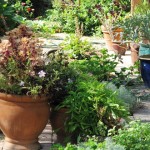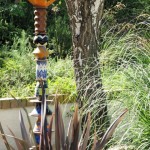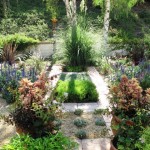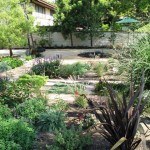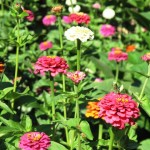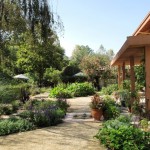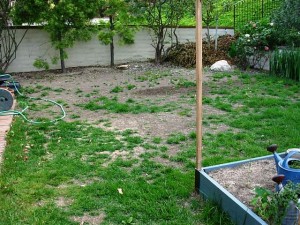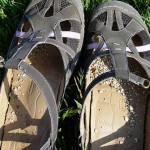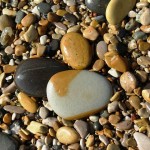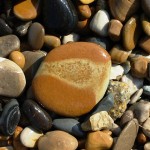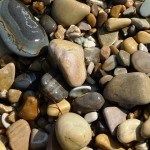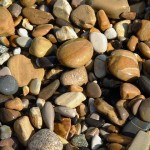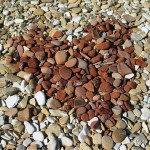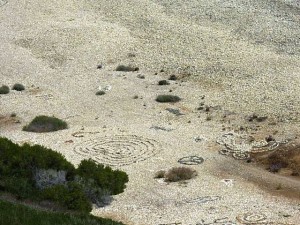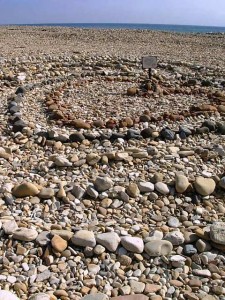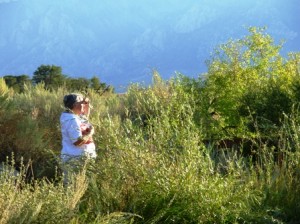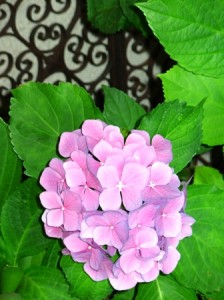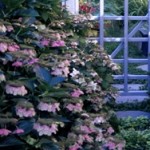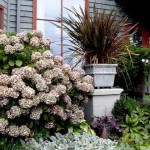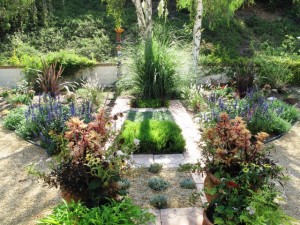
My killer backlit shot of the central path
We now have a backyard that is grass-free. The space has undergone a huge transformation since earlier this summer when a crew removed the last patches of dying turf. With irrigation repaired and new planting beds+borders outlined and populated, we received a delivery of California Gold crushed gravel to carpet the walking areas. I’ve since decided on the very best way to describe this color of gravel. To me, it will forever be called “Golden Lab.” When our dog Zanny lays on the gravel in the warm Cali sunshine, we notice that her fur blends beautifully – practically the same color.
Our 25th anniversary was last week, and Bruce surprised me with a brand new digital camera, a Canon PowerShot G10. This is a “big girl” camera. No point-and-shoot idiot stuff for me anymore. OK, basically, I have no idea how to do anything BUT point and shoot, but I hope to learn.
The partner-in-crime in this Canon choice is none other than Bill Wright. Bill and I have worked together for years and together created Stylish Sheds and Elegant Hideaways. He knows his stuff. I’m sure he rolled his eyes (privately) about my wimpy camera shenanigans while we were on location together. Lucky for me, Bill advised Bruce on this camera purchase. Oh, and one sweet note. Bruce gave me a 35mm manual camera for a wedding gift on August 24, 1984. It was a beautiful Pentax. I used it for years, but eventually, it broke (OK, it “was dropped,” which is my passive way of saying I broke it) and couldn’t be repaired. That he remembered the wedding gift 25 years ago and wanted to do a reprise was both thoughtful and romantic. I’m going to get major mileage out of this Canon. That is, when I learn all of its bells and whistles.
Until then, here is my maiden voyage. Photos of the “new” backyard:
- A detail of the patio and path. We have a lot of pots!
- Sculpture from middle school art auction, with phormium, pampas grass and the inherited weeping birch
- My killer backlit shot of the central path
- Looking across the yard from the opposite side, with house to left
- Tall and dwarf zinnias in Mexican fiesta colors ring the pumpkin patch
- Looking across the backyard with house to the right.









